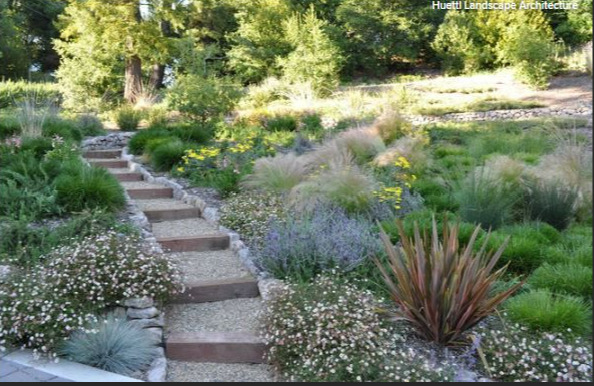Landscaping in hot climates presents unique challenges, but with the right design choices, you can create a beautiful, functional, and sustainable front yard.
Start by considering your goals and what you want out of the space.
● Do you want to add curb appeal to help sell your home?
● Does your family use the space for recreation?
● What hardscapes, such as seating and walkways, are already in place?
● Do you want to add color or edible plants?
● Do you want to attract birds or butterflies?
Next, research the types of plants that can grow in your yard. Take into account the sunniness or shadiness of the area, the quality of the soil, and the amount of water the plants will need.
Once you decide on your goals and do your research, you can start refining your design. Here are 10 landscaping tips to make the most of your front yard in hot climates.
1. Choose drought-tolerant plants
Select plants that are well suited for hot, arid conditions. Native plants are often the best choice because they are adapted to local weather conditions and require less maintenance. Look for species with low water needs, such as succulents, cacti, and drought-resistant perennials.
Although it can be tempting to order these from a catalog, the best drought-tolerant plants come from your local nursery. Local nurseries order plants that are best for your area, and their deliveries are often timed for perfect planting schedules.
2. Prioritize shade
Planting shade trees can help reduce the heat around your home and provide a cooler environment for your plants. Opt for deciduous trees with wide canopies that allow sunlight during winter months and provide ample shade during hot summer days.
If shade trees aren’t an option where you live, consider taller perennial plants that flower. This creates vertical interest in your front yard and a pop of color, too.
3. Use mulch
Mulching helps retain soil moisture and regulates temperature. Use organic mulch materials, such as wood chips, bark, or straw, to create a 2- to 3-inch layer around your plants. Keep the mulch away from the base of the plants to avoid rot. Mulch also reduces yard maintenance by blocking weeds.
4. Group plants with similar water needs
Another way to conserve water is to group plants with similar watering requirements together. This way, you can create different irrigation zones and tailor your watering schedule to the specific needs of each group. This reduces water waste and promotes healthy growth.
5. Opt for efficient irrigation
Drip irrigation systems and soaker hoses deliver water directly to the root zone, reducing evaporation and ensuring efficient water use. Schedule watering early in the morning or in the evening to minimize evaporation and water loss.
6. Incorporate hardscaping elements
Incorporate hardscaping elements — such as paths, patios, and seating areas — in your front-yard design. These features can help break up the space and reduce the amount of turf that requires water and maintenance. Choose permeable materials, such as gravel or permeable pavers, to allow rainwater to infiltrate the soil.
7. Create windbreaks
In hot climates, strong winds can increase the drying effects of the sun. Plant tall, dense shrubs or trees as windbreaks to help protect your front yard from harsh winds and create a more hospitable microclimate for your plants.
8. Reduce lawn size
Lawns can require a lot of resources, such as water, fertilizer, and maintenance. Consider reducing the size of your lawn and replacing it with drought-tolerant ground cover, ornamental grasses, or permeable hardscape elements.
Better still, eliminate your lawn entirely and replace it with native grasses, edible plants, and native perennials for less maintenance and a more natural look.
9. Use light-colored materials
Light-colored hardscape material, such as gravel, pavers, and mulch, reflect sunlight and help keep the surrounding area cool. This can contribute to a more comfortable outdoor space for humans while reducing heat stress on your plants.
10. Maintain your landscape
Regular maintenance is essential for a healthy and water-efficient landscape. Remove weeds, prune dead or diseased plant material, and monitor your irrigation system for leaks and inefficiencies.
Proper maintenance ensures the longevity of your landscape, reduces water waste, and provides a great return on investment. In fact, home improvement statistics indicate that landscaping is one of the few improvements that actually provide a 100% return on investment.
5 Tips for Creating a Drought-Tolerant Yard
The Landscaping Features That Harm Your Home’s Value
Foundational Plantings: Tips and Benefits for a Beautiful Yard


